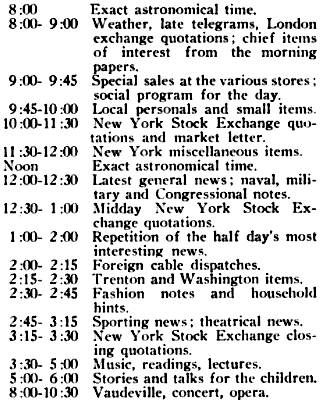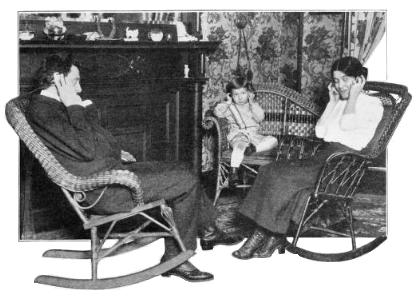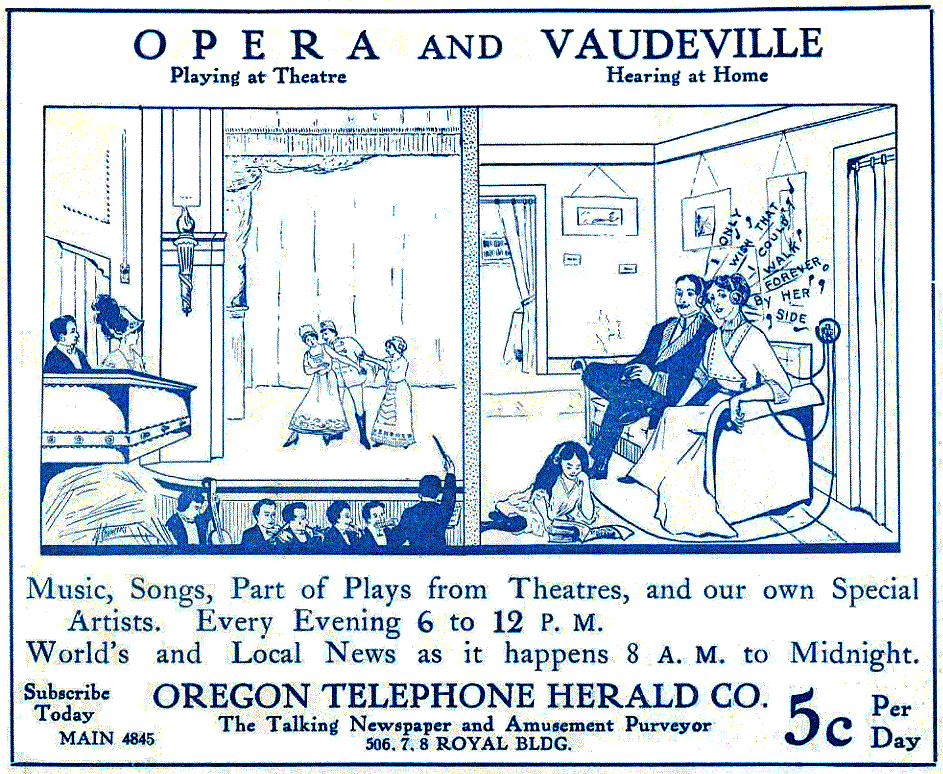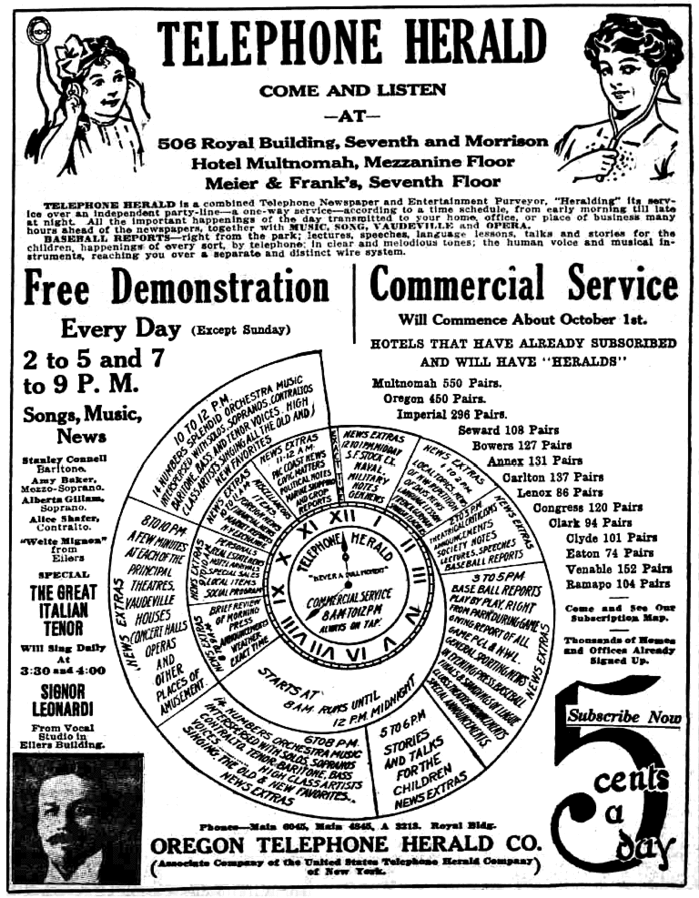created 2025-06-18, & modified, =this.modified
tags:y2025advertising
rel: Musical, Sound Architecture Elevator Music by Joseph Lanza
Why I’m reading
Looking deeper into that period where music was being introduced into stores, en-masse and divorced from the actual performance.
Might be worth digging deeper into department stores in general.
From 2007.
When the technological and social practice of broadcasting became widespread in the early 1920s, radio stations were started by a variety of groups for a variety of reasons. A few dozen department stores established their own stations, using the nascent medium of radio to stimulate a demand for receivers and to promote their overall business.
Frank Presbrey in 1929
With the addition of television, by which a picture of the product in colors will appear before the home radio audience, there is the probability that the department store counter will be radioed right into the home. It is conceivable … that at certain hour each morning a department store salesman will unroll a bolt of fabrics or place other articles before the camera and with colored motion picture and microphone give a selling talk to several hundred thousand women who have seated themselves before the radio in their homes and tuned in for the daily store news.
The screen of an increasing number of electronic devices function as department store windows.
Late 19th century contrasting views of of consumer culture
- George Gissing – harshest, “demands of a competitive, monetary economy are superimposed on would would ideally be a free and creative artistic self.”
- Theodore Dreiser – more positive “democratized luxury”, “endless and dream-like promise of advertisement” is presented in affordable and available goods.
- Emile Zola – tempered, the department store sits between a fantasy palace and oppressive machine.
Enslavement/Empowerment views from scholars
- Enslavement – American media industry being funded by advertising and commercially oriented means that they can do little more than perpetuate the dominant ideology. Ideas, beliefs, and social norms are artificially imparted on the populace.
- Empowerment – media has different interpretations. Mass media empowers, and democratizes.
Definition of a Department Store (1981 government classification)
Retail stores carrying a general line of apparel, such as suits, coats, dresses, accessories; home furnishings, such as table and kitchen appliances, dishes and utensils. These and other merchandise lines are normally arranged in separate sections or departments with the accounting on a departmentalized basis. The store’s departments and functions are integrated under a single management
Why Radio Stations tend to start with W or K
Curious about this, it seems…
All radio stations have a four letter identification code. In 1912 several countries met to discuss international telegraphs. The US was given letters W, K, N and A.
N and A were given to military stations. K and W were assigned for commercial use (West of Mississippi K, East W). The system was not written in stone in the early days, and some stations were grandfathered.
1852 - 1919
1910 Advertisement for Wanamaker’s department store stated wireless stations were under construction in NY and Philadelphia locations. At that time wireless telegraphy was used almost exclusively for point-to-point communication.
1876, Originally known as “The Grand Depot” Wanamaker’s was a department store made out of a former train depot.
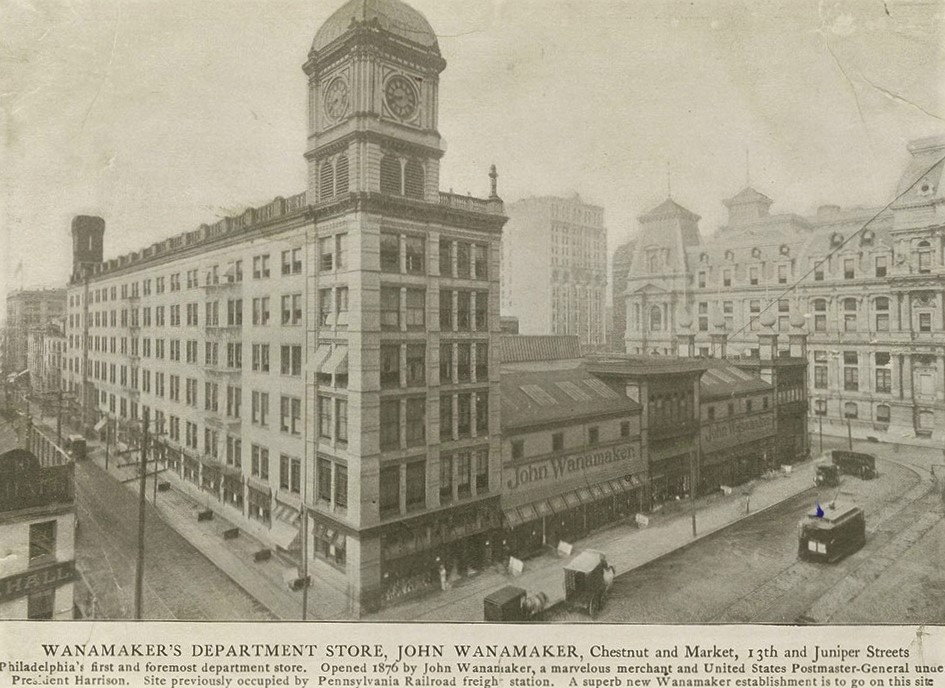
Wanamaker’s was also the first to use pneumatic tubes and electric lights.
Among other uses, the stations promoted a business, entertained shoppers, communicated over land, facilitated retail sales, disseminated news, and broadcast music.
Department stores originated in Paris in the 1850s. Rather than sell a limited number of goods at high mark-up, they sought to increase volume of sales and priced items only slightly higher than wholesale. Items could be returned, and prices were fixed and clearly marked. Informal face-to-face transactions of the village market were more impersonal, regulated, and controlled.
Merchandise became grouped, and what was initially known as “dry good stores” became known as “department stores.”
John Wanamaker repeatedly claimed, for example, that his legendary store was devoted to fulfilling the needs of the people. Leach attributed this devotion to public service in part to the traditions of Christianity, of which Wanamaker was a fervent believer.
Thought
Some impetus for the two-ton pipe organ he installed in the flagship department store.
Wanamaker pushed advertisement, with persistent ads and now commonplace techniques such as the first newspaper ads that spanned more than one column. This became a valuable revenue stream for newspapers.
Elaborate glass window displays worked into this advertisement plan. The task of arranging, dressing, window displays became a specialized occupation in itself.
Sponsored musical performances were done. Many stores went so far as to construct auditoriums or theaters for performers. But music itself was a supplement to retailing, and not a distraction.
In the late 1860s numerous dry goods stores issued catalogs to allow order by mail. Telephone lines also became useful for remote shopping. At the start of the 20th century phones in stores became standard, and a person viewing a catalog could communicate orders directly to a store clerk. Clerks would also call the home, with guidelines to call between 10 and 11am because evening calls would “find a husband at home”.
Telephone also became a distribution service, 1911 phone-casting allowed receivers to be picked up and have “news constantly on tap, like water or gas.”
Thought
Casting your phone now has a completely different context, making a search for this difficult. But the Telephone Herald had a daily schedule like this
Telephone Newspapers
Telephone Herald and Telephone Newspapers
This is cool, so I want to add a section here. Definitely Survey of Dead Media
Telephone Newspapers, introduced in the 1890s, transmitted news and entertainment to subscribers over telephone lines. They were the first example of electronic broadcasting, although only a few were established, most commonly in European cities. These systems predated the development, in the 1920s, of radio broadcasting. They were eventually supplanted by radio stations, because radio signals could more easily cover much wider areas with higher quality audio, without incurring the costs of a telephone line infrastructure.
The United States Telephone Herald Company, founded in 1909, was the parent corporation for a number of associated “telephone newspaper” companies, located throughout the United States, that were organized to provide news and entertainment over telephone lines to subscribing homes and businesses. This was the most ambitious attempt to develop a distributed audio service prior to the rise of radio broadcasting in the early 1920s.
Less than a decade after the failure of the Telephone Herald companies, radio broadcasting was developed, which had the significant advantage that it could dispense with the need to use telephone lines. Moreover, radio programming could be provided free of subscription fees, because selling airtime to advertisers, the financing method most commonly adopted in the United States, provided sufficient revenue for ongoing operations.
The Telephone Herald questioned the acceptability of mixing program content with commercial appeals. A department store wanted to insert daily adverts into the Herald’s lineup. They wanted to advertise in a space “previously reserved for content.”
The Herald refused, believing it would cheapen the broadcasting.
The Herald only lasted a short while.
Electricity
Merchants and engineers used department stores as laboratories, real-world opportunities to experiment and refine new uses for electricity. Stores, for example tested new filaments and bulbs for electric lights as they sought, quite literally, to cast their products in the best possible light, and the power source was put to use in countless other applications.
Wireless stations were added to department stores.
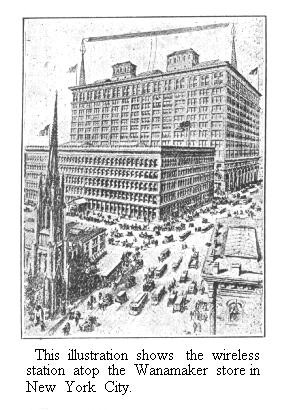
On top of the Philadelphia store, two 125-foot towers supported a 1,000 foot antenna that stretched from Market to Chestnut Streets. Messages were sent by a five-kilowatt rotary-gap transmitter, while the receiver used a Fleming valve detector to filter out unnecessary signals, including those from a government wireless station at a nearby naval yard.
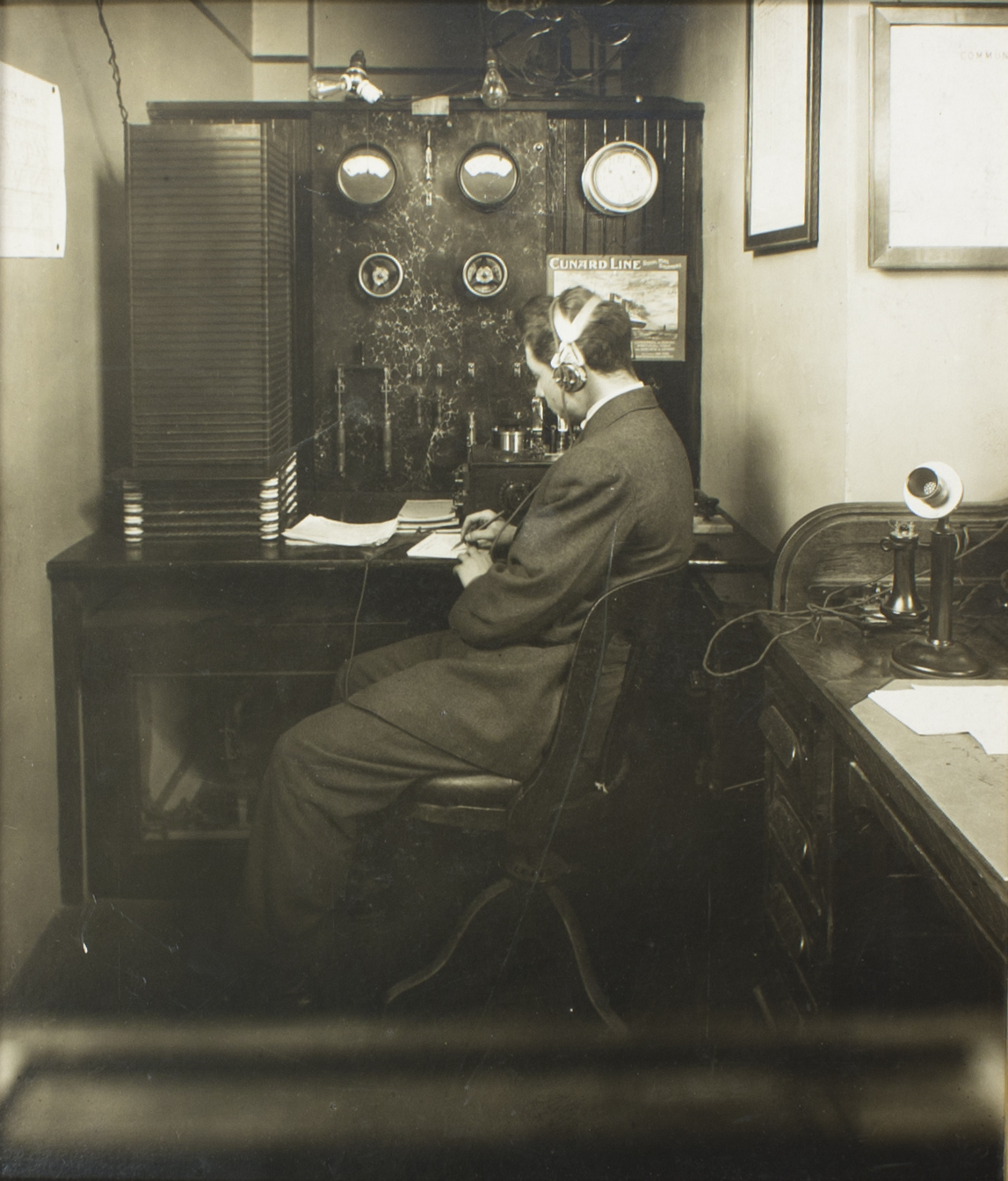
Appleby and the other operators developed a condensed, short-hand version of telegraph code which utilized abbreviations and, along with the break-in innovation, allowed the transmission of over thirty words a minute, a dramatic improvement over the standard speed of the time.
The operators themselves were on showcase through a glass window for the store visitors.
The NY Wanamaker station played into a myth of the Titanic, where the a young operator worked and received the first messages of the sinking. According to an embellished version, the operator Sarnoff, stood at post for 72 hours relaying messages from the rescue ship and names of survivors to the engrossed public.
A number of inventors and amateur enthusiasts had successfully transmitted music over the airwaves, though none had presented a concrete plan for how a broadcast operation might be funded.
The question of new technologies and their introduction into society, however, is more problematic; how could consumers demand something if they were unaware of its very existence?
Thoughts
A related thought, I am really aware of things that worked and were accepted. What about the infinite things made dead, never born or obsolete? What about an awareness of things that were not accepted, for whatever reason.
1920 - 1922
American businessmen, merchants, journalists, educators, politicians, and church leaders realized they could use wireless to broadcast messages to large, dispersed audiences. They erected their own transmission towers, dividing the airwaves.
By the end of 1922, the government had doled out broadcasting licenses to over 600 entities, including 30 department stores.
Radio marketing often employed a gendered approach (with the station hiring its first woman in position as an announcer) with 1922 description of programming at Bamberger
Concerts, such as are sent by others stations, will be broadcasted. These are to be a minor part of the program however. Lectures on cooking, on house furnishing and decoration, on sewing, on new style trends ─ all these will appeal to the woman in the home. Besides these features, news of what the women’s club in Bamberger territory are doing will be spread.
A programming technique was used where a local newspaper printed a large grid with squares with numbers and letters, like a bingo card. Listeners were instructed which squares to fill in, and a low fidelity image results – like a duck in the example. This completed grid served as a coupon for merchandise.
Thought
There are multiple parts to this. First, you get the people focused on maintaining a connection to the programming. It might be exploitable if the key was revealed (“tell your friend it is duck”) and that is copied.
I think of applying some kind of “game” to marketing currently. At least in my case, these exercises seem like a waste of time and I wonder if people can see through them. Like if I am selling something to a group of scientists.
I sense some the novelty has worn off as we are jaded and slightly more savvy, so you’d really have to amp up the deal – which is then increasingly a vector for exploit.
Wanamaker station in Philadelphia had a high-brow approach to department store and programming. Their station emphasized organ concerts. The organ itself was complex, with thousands of moving parts, and the range of tones was far beyond being captured by the capability of standard transmitting equipment.
In 1922 the Hecht Company in DC tried a mind reading program over WEAS. Listeners were invited to send in questions to a mental telepathist before the show, and then have their minds read by radio.
Bamberger’s invited listeners to be featured directly int he program, with an original short story contest.
Wireless in the Window - 1920s Radio Retailing
Department stores served as “consumption junctions” for radio receivers.
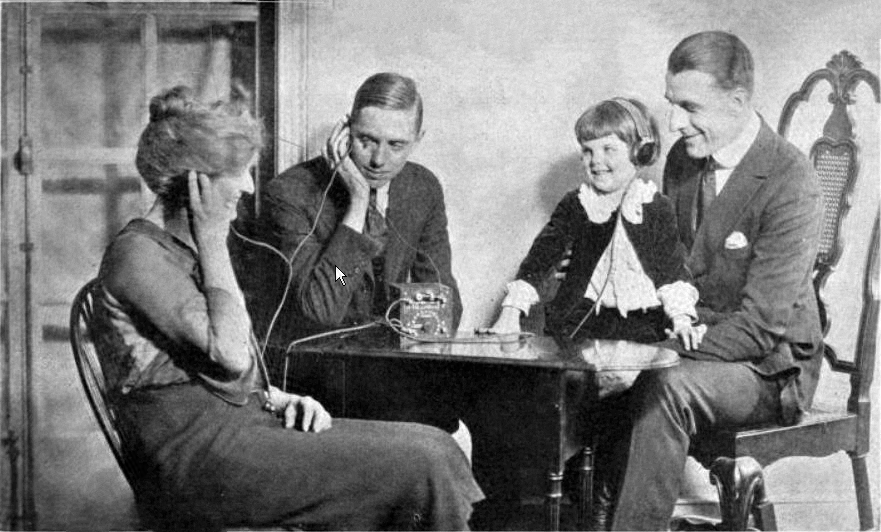
Early broadcasters believed that the industry would expand beyond the limited realm of male enthusiasts if simplified, decorative receivers were developed for females.
Educating the public on radio was an important part of early practice as casual owners wouldn’t understand the technology. This was done through public demonstration.
If a salesman wanted to demonstrate a receiver at a time when the station was not on the air, he would notify the phonograph department via a special light. The second party would then start a phonograph next to a remote microphone and WJAR would come to life momentarily, presumably just long enough to make the sale.
How to Retail Radio disparaged technical experts, segmenting the retail audience into nuts and fans. Nuts wanted to talk tech (antenna and wavelengths) while fans wanted to purchase receivers. The guidebook told to have a means to stop distracting clerks, so a clubroom could be made with reference materials and accessories, leaving the salesmen to focus on profitable fans.
Radio was also promoted through holiday ritual. “A Radio Christmas” campaign. It was arranged for Santa to appear on local radio station.
1923-31
By the time radio entered its Golden Age in the 30s, many original department store stations were gone.
Following one occasion in 1924, the store [Wanamaker] claimed one of the more unusual “firsts” in radio history. In an experiment conducted with the British Broadcasting Company, music from both the Philadelphia and New York stores was picked up and re-transmitted overseas by Westinghouse station KDKA.
Some publicity stunts with WIP
- ocean floor broadcasts
- prison broadcasts
- daily program of bedtime stories (Uncle WIP)
Uncle WIP was popular with kids and the department became named Uncle WIP’s Toyland. This was emulated by other stations.
Advertising over the airwaves became increasingly direct, at the same time stores were leaving the radio industry or restructuring their operations.
In contrast to indirect advertising, in which the sponsor’s name was invoked but products never discussed, these shows were explicit descriptions of products and prices.
A flimsy dramatic narrative was sometimes interspersed with the advertisement though some shows dispensed with this pretense.
Fictional female characters typically served as hosts, sometimes using names derived from the respective stores.
NRDGA issued advice about radio-based shopping services:
Almost all stores use a woman – primarily because her talks are on subjects of interest to women … Hers must be a good microphone voice. As the window displays are frequently called the eyes of the store, the broadcaster becomes known as the voice of the store. This is so important that in some stores a great part of the cost of the radio program is represented in the salary paid the announcer.
